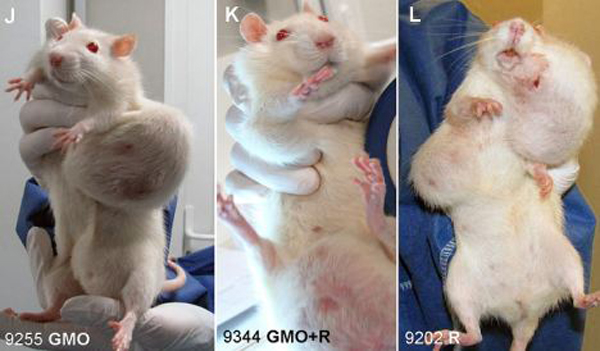GMO humans about to become reality… beware the emergence of unforeseen consequences
04/24/2018 / By Isabelle Z.

When scientists started genetically modifying plants, some observers worried that it would just be a matter of time before they tried the same thing on humans… and it looks like that nightmare scenario is finally about to become reality. Regulators have given plans to trial DNA splicing therapy their stamp of approval, allowing humans to be genetically modified in a move that has many wondering just how far scientists will take the technology.
The therapy is being used to address the blood disorder beta thalassemia, which reduces a person’s hemoglobin production. Hemoglobin is responsible for carrying oxygen to cells, and when it’s lacking, a person can experience anemia, fatigue, shortness of breath, slow growth and bone deformities.
The blood disorder is inherited, and patients typically require a lifetime of blood transfusions. This places them at risk of complications like organ damage, blood-borne infections and iron overload. The disorder affects 100,000 people around the world.
Now, scientists believe they can use DNA splicing to stop the genetic mutation that causes the problem and help people return to healthy hemoglobin levels. The work is being carried out by the biotech firm Crispr Therapeutics.
Inspired by bacteria’s natural defense mechanism, the researchers have come up with a cutting mechanism that will remove the mutated areas of DNA. The initial tests will be carried out outside the human body using stem cells that were harvested and grown in a lab. Researchers will remove the gene that represses the growth of hemoglobin so the patient’s bone marrow can return to normal output levels.
The power of the elements: Discover Colloidal Silver Mouthwash with quality, natural ingredients like Sangre de Drago sap, black walnut hulls, menthol crystals and more. Zero artificial sweeteners, colors or alcohol. Learn more at the Health Ranger Store and help support this news site.
Beta thalassemia is the first disease that will be treated with this approach, but it’s safe to assume it won’t be the last. In fact, the Francis Crick Institute’s Professor Robin Lovell-Badge told the Sunday Telegraph: “We will look back and think that this is the real beginning of gene therapy.”
How far will it go?
A team of Chinese scientists have already been working on using Crispr to edit the thalassemia gene with funding from their government. Chinese scientists say they used human embryos that were not viable that were taken from IVF clinics for their work.
The researchers in this experiment reported some “off-target effects” as well as mosaicism, which means that there were lots of mistakes they couldn’t have predicted, like editing occurring where it wasn’t supposed to and not taking place in all the embryos equally.
On another occasion, Chinese scientists edited DNA to increase the muscle growth in some dogs so they could run faster and grow stronger. Their work has raised a lot of eyebrows, and it’s difficult – and frightening – to imagine where all this could be headed. Could militaries and law enforcement agencies use the technology to create stronger dogs? Will they alter human DNA to create police officers and soldiers who are stronger and faster? Where does it end?
If there’s one thing we’ve learned as human beings, it’s that playing god doesn’t usually work out the way we want it to. Just look at all the damage caused by genetically modified crops to human health, the environment, and life on the planet in general. Genetically engineered crops have resulted in a huge increase in the use of cancer-linked herbicides such as glyphosate, which now permeates the food supply and contaminates human populations. When you consider how terribly wrong genetically modifying plants has gone, it’s reasonable to assume that the consequences of genetically modifying humans could be less than ideal.
Read GeneticLunacy.com for more coverage of gene editing gone wrong.
Sources for this article include:
Tagged Under: beta thalassemia, biomedical research, biotech, disease treatments, DNA splicing, gene editing, genetic engineering, genetic lunacy, Genetic Mutations, GMO humans, GMOs




















